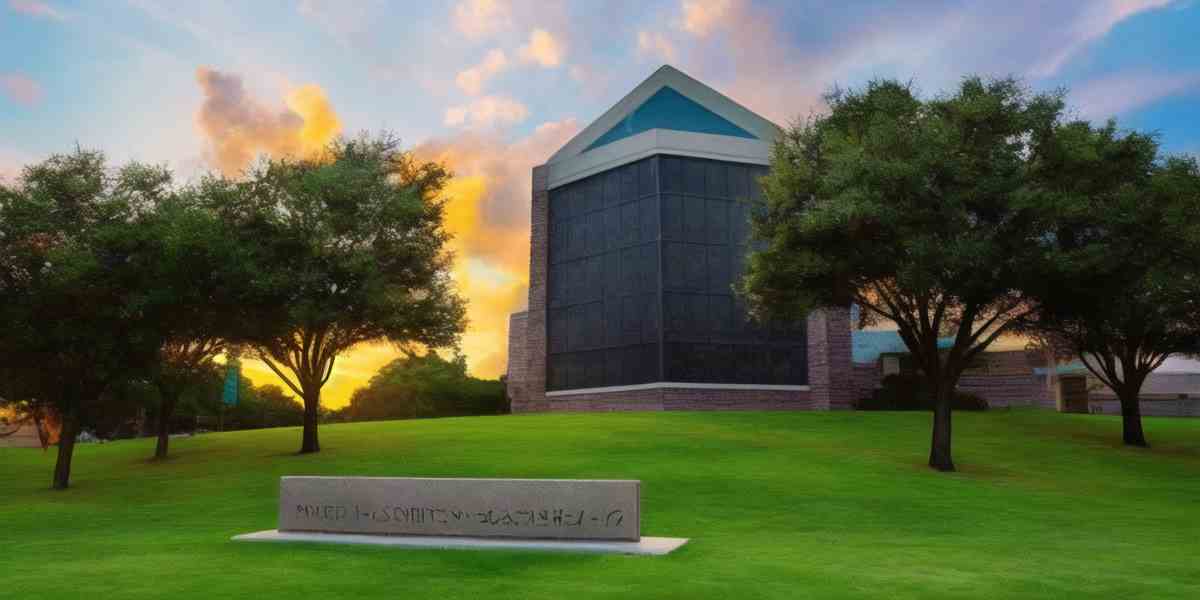Hardin-Simmons University
2024 USNews Best Colleges Ranking: 394(↓63) (Click for schools/majors ranking)
Abbreviation/Alias: HSU | Hardin-Simmons
School Characteristics: Private, non-Profit (4-Years)
Calendar systerm: Semester
Religious Affiliation: Baptist
School Chief: Dr. Chris McNair (Provost and Chief Academic Officer)
Website: https://www.hsutx.edu/; Phone: 3256701000
Location: 2200 Hickory, Abilene, TX, 79698-0001

Hardin-Simmons University Important Facts
Hardin-Simmons University Degrees and Majors
Hardin-Simmons University Ranking and Admission
Hardin-Simmons University Admission Score Requires
*Numbers at left represent SAT/ACT submitting percentage, numbers on blue blocks represent 25%-75% admission scores
**Drag green block to check data for different years, click blue block to check scores trends
Hardin-Simmons University Students Diversity
Hardin-Simmons University Students Age Distribution
Hardin-Simmons University International Students Trends
Hardin-Simmons University Campus and Safety
Nearby Top Colleges
Campus Safety
Reference
- Hardin-Simmons University Official Website
- USNews Best Colleges Ranking
- USNews Bset Global Universities Ranking
- THE World University Ranking
- QS World University Ranking
- ARWU World University Ranking
- US Department of Education College Scorecard
- National Center for Education Statistics
- Forward Pathway US College Ranking Database
 Hardin-Simmons University Important Facts Trends
Hardin-Simmons University Important Facts Trends
 Hardin-Simmons University degrees/majors
Hardin-Simmons University degrees/majors
Hardin-Simmons University major details
*Depends on whether majors have graduates in 2022 or not, Yes / No
**Move mouse on can check deitaled graudates number, click for major detailed information
***Due to privacy policy, graduate salaries are not shown for some majors that has few gradautes
| Major | Graduate Salary | Under | Master | Doctor |
|---|---|---|---|---|
| Communication Sciences and Disorders, General. | - | |||
| Physician Assistant. | - | |||
| Athletic Training/Trainer. | - | |||
| Marriage and Family Therapy/Counseling. | - | |||
| Physical Therapy/Therapist. | $82,413 | |||
| Registered Nursing/Registered Nurse. | $76,178 | |||
| Family Practice Nurse/Nursing. | $76,178 |
| Major | Graduate Salary | Under | Master | Doctor |
|---|---|---|---|---|
| Business Administration and Management, General. | - | |||
| Non-Profit/Public/Organizational Management. | - | |||
| Organizational Leadership. | - | |||
| Accounting. | - | |||
| Finance, General. | - | |||
| Management Information Systems, General. | - | |||
| Management Science. | - | |||
| Marketing/Marketing Management, General. | - |
| Major | Graduate Salary | Under | Master | Doctor |
|---|---|---|---|---|
| Sport and Fitness Administration/Management. | $42,764-$45,010 | |||
| Exercise Science and Kinesiology. | $42,764-$45,010 |
| Major | Graduate Salary | Under | Master | Doctor |
|---|---|---|---|---|
| Higher Education/Higher Education Administration. | - | |||
| Special Education and Teaching, General. | - | |||
| Counselor Education/School Counseling and Guidance Services. | $47,162 | |||
| Elementary Education and Teaching. | $41,503 | |||
| English/Language Arts Teacher Education. | $50,558 | |||
| Mathematics Teacher Education. | $50,558 | |||
| Music Teacher Education. | $50,558 | |||
| Physical Education Teaching and Coaching. | $50,558 | |||
| Reading Teacher Education. | $50,558 | |||
| Science Teacher Education/General Science Teacher Education. | $50,558 | |||
| Social Studies Teacher Education. | $50,558 | |||
| History Teacher Education. | $50,558 |
| Major | Graduate Salary | Under | Master | Doctor |
|---|---|---|---|---|
| Psychology, General. | $34,737 | |||
| Health/Medical Psychology. | - |
| Major | Graduate Salary | Under | Master | Doctor |
|---|---|---|---|---|
| Biology/Biological Sciences, General. | $48,295 | |||
| Biochemistry and Molecular Biology. | - |
| Major | Graduate Salary | Under | Master | Doctor |
|---|---|---|---|---|
| Graphic Design. | - | |||
| Drama and Dramatics/Theatre Arts, General. | - | |||
| Fine/Studio Arts, General. | - | |||
| Music, General. | - | |||
| Music Performance, General. | - | |||
| Music Theory and Composition. | - | |||
| Voice and Opera. | - | |||
| Music Management. | - |
| Major | Graduate Salary | Under | Master | Doctor |
|---|---|---|---|---|
| Bible/Biblical Studies. | - | |||
| Worship Ministry. | - | |||
| Divinity/Ministry. | - | |||
| Theological and Ministerial Studies, Other. | - | |||
| Pastoral Studies/Counseling. | - |
| Major | Graduate Salary | Under | Master | Doctor |
|---|---|---|---|---|
| Multi-/Interdisciplinary Studies, General. | - |
| Major | Graduate Salary | Under | Master | Doctor |
|---|---|---|---|---|
| Criminal Justice and Corrections, General. | $52,024 |
| Major | Graduate Salary | Under | Master | Doctor |
|---|---|---|---|---|
| Communication Management and Strategic Communications. | - |
| Major | Graduate Salary | Under | Master | Doctor |
|---|---|---|---|---|
| Computer Programming/Programmer, General. | - |
| Major | Graduate Salary | Under | Master | Doctor |
|---|---|---|---|---|
| Human Development and Family Studies, General. | - |
| Major | Graduate Salary | Under | Master | Doctor |
|---|---|---|---|---|
| Human Services, General. | - | |||
| Social Work. | - |
| Major | Graduate Salary | Under | Master | Doctor |
|---|---|---|---|---|
| Economics, General. | - | |||
| Political Science and Government, General. | - |
| Major | Graduate Salary | Under | Master | Doctor |
|---|---|---|---|---|
| Physical Sciences, General. | - | |||
| Chemistry, General. | - | |||
| Geological and Earth Sciences/Geosciences, Other. | - | |||
| Physics, General. | - |
| Major | Graduate Salary | Under | Master | Doctor |
|---|---|---|---|---|
| Christian Studies. | - |
| Major | Graduate Salary | Under | Master | Doctor |
|---|---|---|---|---|
| English Language and Literature, General. | - |
| Major | Graduate Salary | Under | Master | Doctor |
|---|---|---|---|---|
| History, General. | - |
| Major | Graduate Salary | Under | Master | Doctor |
|---|---|---|---|---|
| Mathematics, General. | - |
 Hardin-Simmons University Schools/Majors Ranking
Hardin-Simmons University Schools/Majors Ranking
Under Ranking (2024)
- No Ranking
Grad Ranking (2025)
*Rankings have been updated to 2025USNews schools/majors ranking, rankings are for reference only
*numbers in bracket represent rankings change compare to last version
 Hardin-Simmons University Varsity Athletes
Hardin-Simmons University Varsity Athletes
| NCAA Division III with football | MEN | WOMEN |
|---|---|---|
| Football | 227 | - |
| Soccer | 48 | 32 |
| Track and Field (Indoor) | 44 | 34 |
| Track and Field (Outdoor) | 44 | 34 |
| Basketball | 19 | 21 |
| Baseball | 39 | - |
| Softball | - | 27 |
| Tennis | 12 | 14 |
| Volleyball | - | 20 |
| Golf | 8 | 8 |
| Cross Country | 7 | 5 |
| NCAA Division III with football | MEN | WOMEN |
|---|---|---|
| Football | 223 | - |
| Soccer | 37 | 35 |
| Track and Field, Outdoor | 31 | 24 |
| Baseball | 33 | - |
| Basketball | 14 | 16 |
| Softball | - | 25 |
| Tennis | 6 | 12 |
| Track and Field, X-Country | 9 | 7 |
| Volleyball | - | 16 |
| Golf | 9 | 6 |
| NCAA Division III with football | MEN | WOMEN |
|---|---|---|
| Football | 202 | - |
| Track and Field, Outdoor | 40 | 36 |
| Soccer | 34 | 31 |
| Track and Field, Indoor | 21 | 20 |
| Basketball | 15 | 20 |
| Baseball | 31 | - |
| Softball | - | 25 |
| Track and Field, X-Country | 10 | 14 |
| Tennis | 10 | 13 |
| Golf | 9 | 10 |
| Volleyball | - | 18 |
| Table Tennis | - | - |
| Weight Lifting | - | - |
| Water Polo | - | - |
| Wrestling | - | - |
| Rodeo | - | - |
| Other Sports | - | - |
| Archery | - | - |
| Badminton | - | - |
| Beach Volleyball | - | - |
| Bowling | - | - |
| Equestrian | - | - |
| Sailing | - | - |
| Team Handball | - | - |
| Synchronized Swimming | - | - |
| Swimming | - | - |
| Swimming and Diving | - | - |
| Squash | - | - |
| Skiing | - | - |
| Rowing | - | - |
| Rifle | - | - |
| Lacrosse | - | - |
| Ice Hockey | - | - |
| Gymnastics | - | - |
| Field Hockey | - | - |
| Fencing | - | - |
| Diving | - | - |
| All Track Combined | - | - |

 Hardin-Simmons University Important Facts Trends
Hardin-Simmons University Important Facts Trends
















































































































































































































































































































































































































































